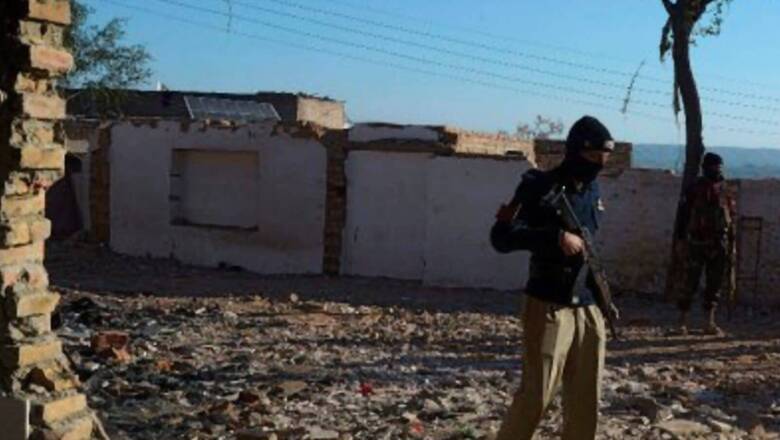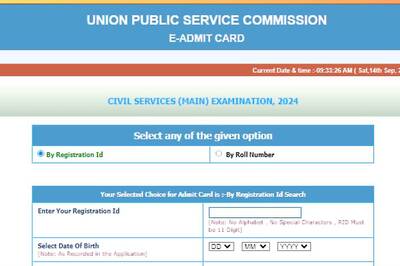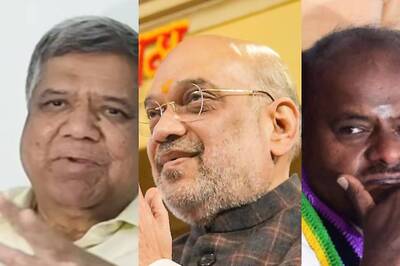
views
Muhammad Ali Jinnah saw the dream of making Pakistan a secular that will give equal rights to all religions. His first presidential address to the constituent assembly of Pakistan on August 11, 1947 assured it, “You are free; you are free to go to your temples, you are free to go to your mosques or to any other place or worship in this state of Pakistan. You may belong to any religion or caste or creed — that has nothing to do with the business of the state.”
As per Jinnah, the Pakistan of the future would follow the fundamental principles that ‘all citizens in the country are equal, that there would be no discrimination, that there would be no distinction between one community and another and no discrimination between one caste or creed and another’.
In that country of Jinnah’s dreams, very few Hindu temples are left now and these temples too are facing frequent attacks, desecration and destruction while no action is taken against the people involved.
Lahore had around 40% Hindus and Sikhs according to 1941 Census. It means the city had many temples and gurdwaras. Similar was the situation across the whole of Pakistan, including the part that became Bangladesh in 1971. Today, the country has just 13 operational Hindu temples managed by the Pakistan’s Evacuee Trust Property Board (ETPB), the Pakistan government institution that manages religious institutions and festivals of the minority community in the country.
Curiously, ETPB ignores the minorities of Pakistan to appoint as official board members, even if, in theory, it works for their religious institutions.
Pakistan has never cared for minorities and it is well known truth. According to the US Commission on International Religious Freedom (USCIRF), “the government of Pakistan systematically has enforced blasphemy laws and has failed to protect religious minorities from abuses by non-state actors.” There was a sharp rise in targeted killings, blasphemy cases, forced conversions, and hate speech targeting religious minorities including Ahmadis, Shia Muslims, Hindus, Christians, and Sikhs, USCIRF adds.
On August 4, yet another Hindu temple was desecrated in that country. The temple in Bhong city of the Rahim Yar Khan district of Pakistan’s Punjab province saw a radicalized mob raising religious slogans which damaged idols and destroyed the temple property.
But what is more ridiculous this time is the fact that Pakistan has decided to put the blame on India and not its Pakistani citizens, even for desecrating a Hindu temple, like it does after ever terror attack there. And like always, there is going to be no action taken against such radicals.
Though Pakistan’s Supreme Court took cognizance of the matter and ordered for restoration of the temple but nothing significant is expected to happen. Minorities Commission of Pakistan submitted a report in April in Pakistan’s Supreme Court on poor situation of religious institutions of minorities in the country.
According to the report submitted by it, ETPB only manages 13 out of 365 temples in the country. Sixty-five temples are left to be managed by the Hindu community that see the mob attacks regularly while rest of the temples have simply been abandoned, to be exploited by the land-mafia. As per the reports, even the sacred ancient temples that are many centuries old are in poor condition. ETPB has totally failed, the report adds.
Under international pressure for hostile attitude towards minorities, in an attempt to give a positive message, Pakistan some years ago decided to build a Hindu temple for Lord Krishna in its capital city Islamabad and took responsibility of arranging land and giving funds for construction.
Incidentally, as per media reports from Pakistan, there are around 3,000 Hindus in Islamabad but they do not have any Hindu temple to pray for. True, Islamabad has a Ram Temple built in the 16th century but the temple is used only as a tourist spot now. Hindus are not allowed to pray there and all idols have been removed.
So, apart from promoting religious harmony, it was a welcome move also as new Hindu temple or the fourth new Hindu temple in Pakistan since its independence could have become the first temples for Hindus in Pakistan’s capital city.
But that could not be. Under influence of radicals who carried out violent protests against it and destroyed its partially built wall, the government had to finally halt the temple construction. The temple was allowed construction only in December 2020 after Pakistan government decided not to fund it. Now it is being built by Islamabad’s Hindus only.
Three other Hindu temples in Pakistan are built by the International Society for Krishna Consciousness (ISKCON). These are Lord Krishna temples, located in Karachi, Larkana in Sindh, and Hyderabad in Sindh. But construction of these temples also saw protests.
Though Pakistani propaganda says it will restore 400 Hindu temples, more and more of the Hindu temples are frequently been desecrated or destroyed. In August 2020, an old Hanuman temple and houses of 20 Hindu families associated with it in Karachi were demolished. In October 2020, a Ram temple in Sindh was vandalized. In December 2020, in Pakistan’s Khyber Pakhtunkhwa province, a century old Hindu temple was destroyed again by the radicalized mob. This year, in March, a 100-year-old temple in Rawalpindi, that was being renovated, was attacked with mob vandalizing the temple property. The list is long with zero punishment rate against the people involved.
In 2014, an organization, the All Pakistan Hindu Rights Movement (PHRM), published a survey report. The survey report found that 95% of the temples present in Pakistan since 1990 were destroyed or damaged. Out of the 428 places of worship, only 20 remained operational while 408 temples were converted either into commercial properties or into residential establishments. Out of the 20 temples, 11 were in Sindh, 4 in Punjab, 3 in Balochistan and 2 in Khyber Pakhtunkhwa.
Babri Masjid demolition in India only hastened the pace of temple demolition across Pakistan and Bangladesh. Around 1,000 temples were alone targeted or destroyed in Pakistan and 2014 PHRM survey findings continue to reflect in 2021 as well. From 20 operational temples in 2014, Pakistan now only has 13 temples managed by ETPB.
Read all the Latest News, Breaking News and Coronavirus News here.



















Comments
0 comment